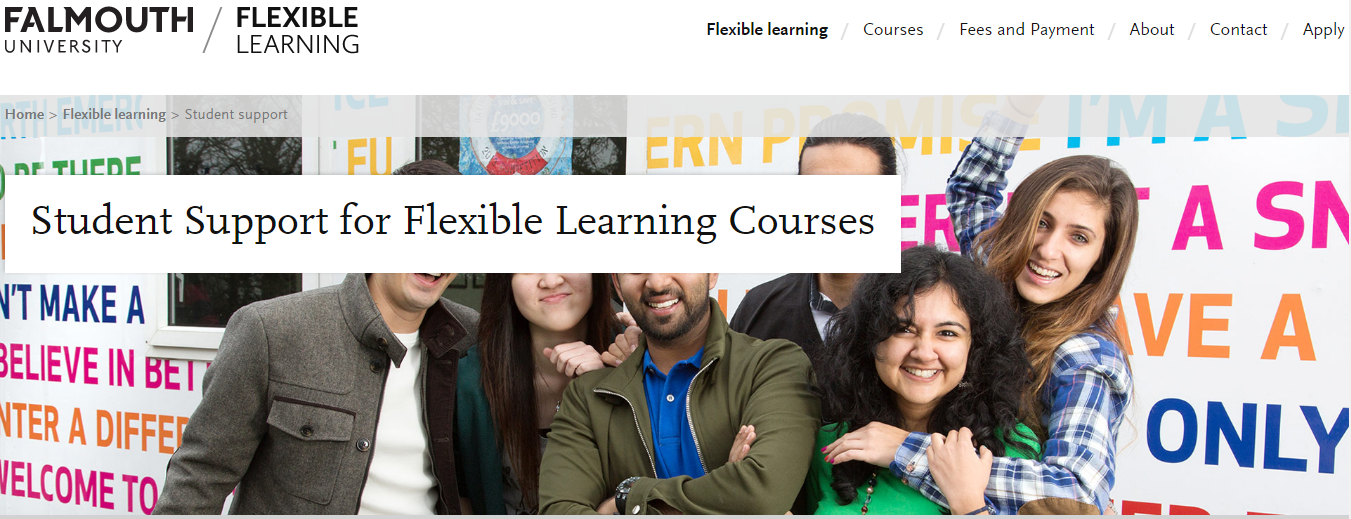
“Blended learning” is typically described as the thoughtful combination of online and face-to-face instruction. It is an intuitive improvement to strictly online educational models that suffer for lack of human interaction, and strictly on-campus formats that simply aren’t flexible enough for today’s non-traditional students.
Embraced as the best of both worlds, blended learning has surged in popularity over the last several years, finding its way into schools ranging from the Ivy League to community colleges. According to the 2015 Horizon Report (Higher Ed Edition), 13.3% of US students are already enrolled in blended learning programs. Meanwhile, the 2015 Survey of Online Learning reveals that in general, enrollment in online learning has risen consistently over the last 13 years, with no sign of slowing.
What factors are pushing blended learning into the higher ed spotlight? Why are more and more students prioritizing schools that blend on- and off-line learning? And how are colleges and universities accommodating this demand to stay relevant in a competitive marketplace?
Let’s look at the data, and some of the different ways schools are leveraging blended learning to diversify their recruitment and attract previously “unreachable” students.
The Domination of Non-Traditional Students & the Blended Learning Paradigm
By 2020, 45% of college students in the US will be adult learners. These students are career-changers, promotion-seekers, working professionals, recent immigrants, and parents. They have mortgages, bills to pay, children to support, and incredibly busy schedules. Conventional on-campus learning models simply do not work for the vast majority of this growing demographic.
Over the years, the overwhelming need for alternative instructional models has spawned many self-paced programs delivered exclusively online. But more often than not, these programs simply aren’t personalized enough to mitigate high drop-out rates. Left to learn in a vacuum, students tend to drift and don’t finish their courses.
Enter blended learning. Blended programs help solve this problem by integrating face-to-face instruction into the online curriculum. The combination of on-site meetings, robust virtual tutoring, and meaningful online group work create a stronger sense of community, accountability, and much needed support for busy participants. And the resultant improvements in student performance are well documented.
A recent study on blended learning reveals that the combination of high quality digital technologies and face-to-face learning opportunities result in greater student achievement than either traditional on-campus methods OR exclusively online programs. Plus, online course components help students build the digital literacies they need to compete for jobs after graduation.
It’s not surprising that many career colleges and undergraduate programs have already jumped on board with blended learning in order to recruit the rapidly expanding group of non-traditional students. But, it’s the adoption of this approach by Ivy League schools and a range of master programs that truly signals its movement into the higher ed mainstream.
Wondering if your online programs already qualify as “blended?” Here’s a useful framework for understanding where blended learning sits on the educational delivery continuum (vis-a-vis formats that merely incorporate web-based tools, don’t use them much at all, or rely exclusively on online delivery):
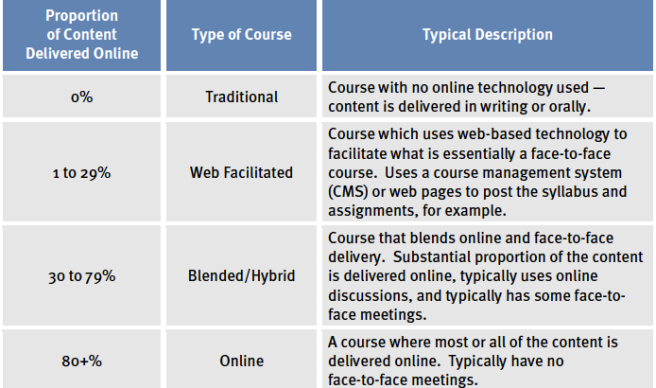
Now let’s take a look at how schools are adapting and promoting blended learning programs to tap into new markets, and stay relevant within an increasingly “borderless” age of teaching and learning.
Falmouth University Launches “Flexible” MAs to Attract International Professionals
Falmouth University in the UK recently launched “Falmouth Flexible,” a suite of four creative MA programs that blend online course delivery with twice yearly face-to-face workshops.
The online component makes it possible for the university to attract and enroll students from across the globe, dramatically increasing the scope and potential of its international student recruitment. Plus, rather than holding the hands-on workshops exclusively at Falmouth, the university plans to offer meetings offsite as well, at various locations around the world, making attendance far easier for far-flung students.
Another key feature of Falmouth’s take on blended learning is that the workshops are not, at this point, mandatory. Students are not penalized for declining to attend. This way, the university taps into growing demand for blended formats, while allowing students to determine just how “blended” their experience will be.
Here’s a look at the “courses” section of the Falmouth Flexible website, featuring the four creative MA programs currently on offer:


By framing the workshops as optional, Falmouth wisely avoids alienating prospective students who would not be able to attend them – while attracting those for whom the workshops present an exciting opportunity for face-to-face learning and networking.
What stands out though, is the effort the university is making to assure students that each MA program, while primarily delivered online, comes with the same opportunities for collaboration and personalized attention one would expect from the on-campus experience.
Here’s a look at how Falmouth Flexible describes its approach, with heavy emphasis on readily available student support that spans everything from technical troubleshooting to career planning:
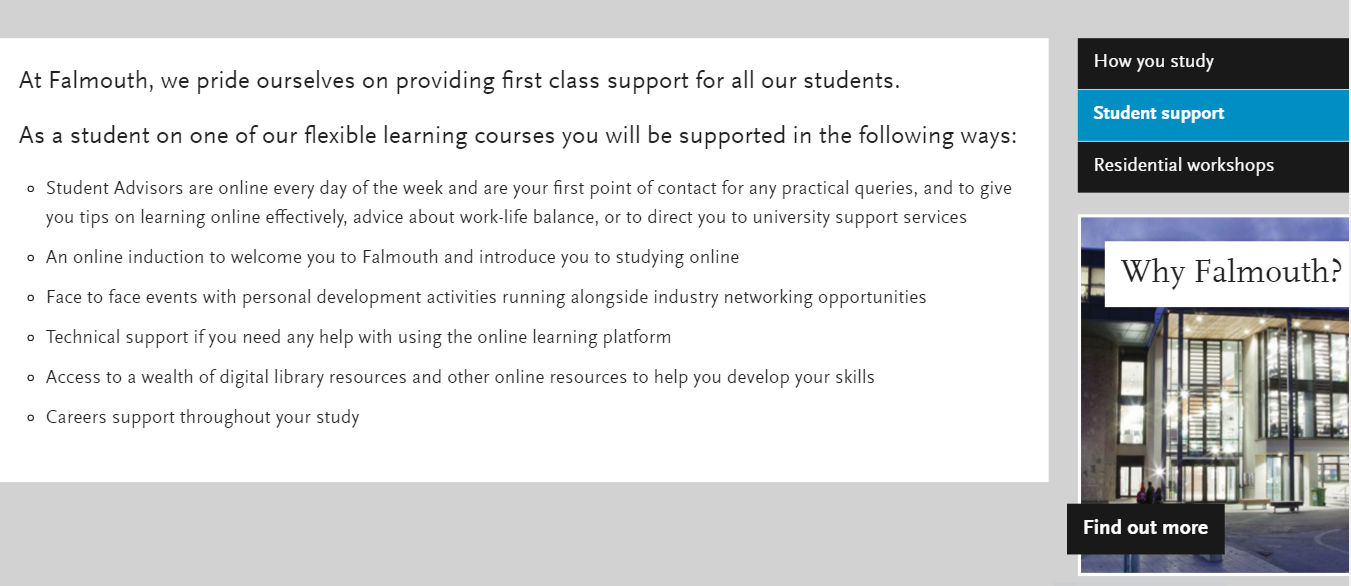
Also noteworthy is Falmouth’s guarantee that blended learning students will receive the exact same diploma as their traditional, on-campus peers. This goes a long way toward reassuring prospective applicants that they are not sacrificing on quality (or the marketability of their credential) by opting for the flexible online option.
This key marketing message, combined with those that emphasize student support, collaborative activities, one-on-one tutoring, and group networking opportunities, are crucial components of an effective student recruitment content strategy for blended learning programs.
Yale University Taps Rural Students with 50-50 Blended Medical Program
Yale is preparing to launch its second foray into blended learning with a graduate program for physician assistants. The program delivers coursework online, but requires students to participate in field training in person, at a Yale-approved clinic close to where they live. With the field component comprising roughly half of the entire program, this approach favors a more thoroughly “blended” half-and-half approach than Falmouth Flexible.
James Van Rhee, director of the Physician Associate program, says the blended version was designed to expand the medical school’s reach, particularly into rural areas. Yale hopes the blended learning approach will increase student enrollment from 40 (the size of the current cohort) to 300.
That’s an ambitious goal – and the kind of expansion blended learning makes possible by moving instruction out of the lecture hall, and into virtual space where there are far fewer barriers to enrollment.
However, at a recent Town Hall, members of the Yale community raised concerns about the blended Physician Associate program, namely:
- Because of a lingering bias toward virtual instruction, the online-blended program might devalue the degree, and negatively impact the reputation of physician’s assistants within the medical community.
- It may be challenging to provide rigorous clinical education and oversight at medical clinics located outside of the New Haven community (in rural areas).
Roadblocks around legitimacy and individualized supervision are nothing new in the world of online education. Yale, and other institutions launching these types of blended learning programs, will need to address and resolve these concerns via the promotional content used to market the courses.
Simmons School of Nursing and Health Sciences works toward this goal by adding a comprehensive FAQ section to its blended nursing program page (called Nursing@Simmons).
Questions 2,3,7,10 and 12 are particularly relevant to all blended program students:
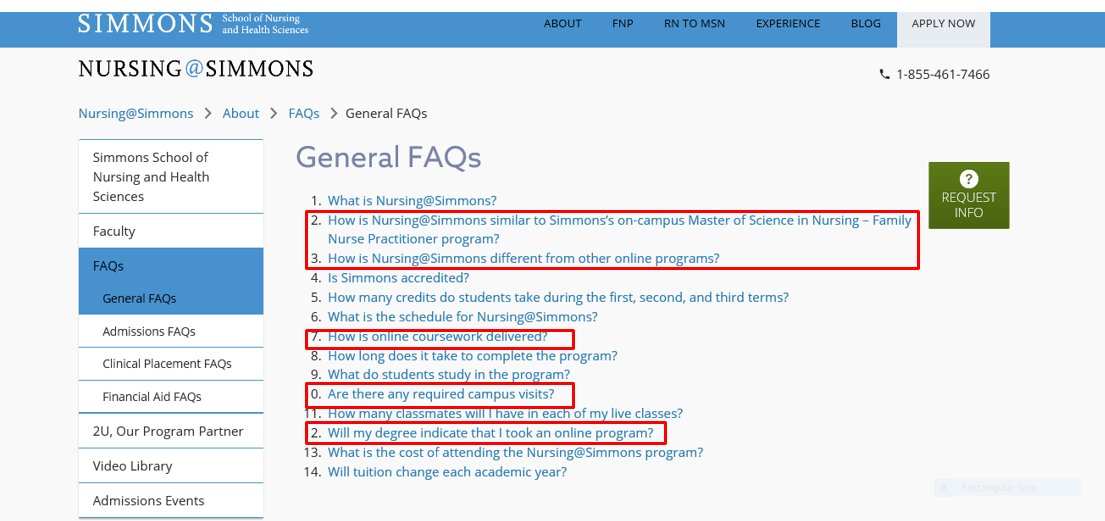
Nursing@Simmons does a good job of answering these concerns, clarifying precisely how learning happens, and affirming the legitimacy of the degree.
Any school launching a blended version of an existing program – or designing one from scratch – would be wise to include a similar piece of content, and promote it across digital channels. We’d suggest inviting enrolled/graduated students and staff to answer each question, ideally on video, to help add “social proof” to your campaigns and personalize your messaging.
USC Targets Mid-Career Professionals with Hybrid Health Administration Program
In this approach to blended learning, students are still tethered to campus by compulsory face-to-face sessions that take place twice each term, at the University of South Carolina. This limits international students’ access to the program (unless they are willing to travel to campus twice a semester), but offers an important sense of connection to the broader school community (which traditional online programs lack).
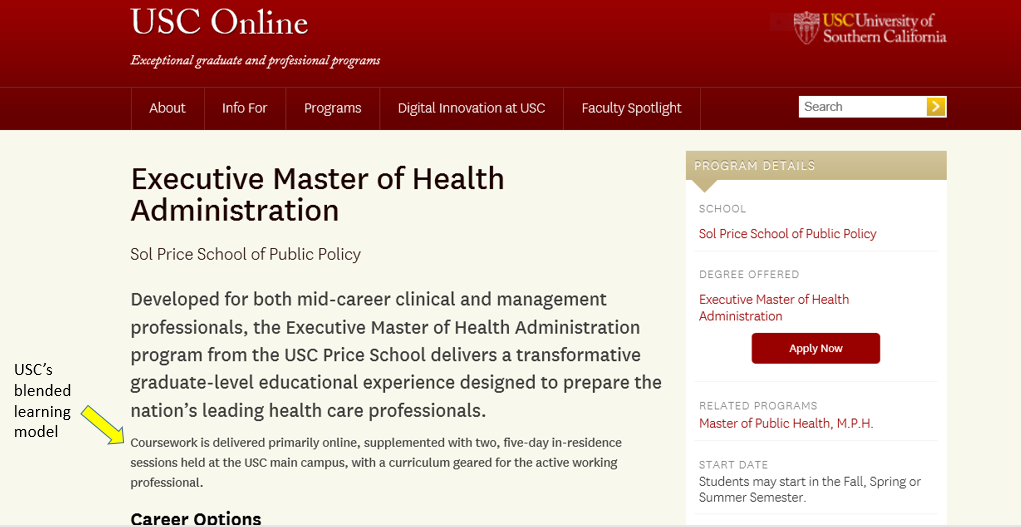
By including a mandatory on-campus component, USC affords “hybrid” students ample opportunity to meet and network with one another. In many ways, USC’s combination of on- and off-campus learning is ideal for mature students who are heading back to school after a long absence from the educational system. Flexibility is offered with online coursework, but not at the expense of campus-based experiences. Several colleges are embracing this format because it serves to gently transition mature students back to school. This concept of helping students ease into learning again is a valuable selling point, particularly for older students who doubt their capacity to handle advanced coursework, or successfully balance jobs with school.
Integrating Blended Learning into Your Content Strategy for Student Recruitment
Despite its growing popularity among students and schools, blended learning still struggles to assert itself as a legitimate – in some cases, even superior – alternative to conventional educational models.
In order to attract previously unreachable students (be they internationals, busy career professionals, back-to-school transitioners, people who live in rural areas, etc.) schools must address potential roadblocks head-on via multi-channel promotional campaigns.
We suggest developing detailed personas for each blended learning target audience, so you know exactly which pain points to resolve and goals to emphasize. That being said, the following more general suggestions should provide a solid base on which to build your own unique blended learning promotional strategy.
- Focus on the high quality, cutting edge technologies made available to students through the online portion of your programs (how they support and enhance learning, and help students build digital skills that will benefit them post-graduation)
- Include testimonials from existing students that speak to the legitimacy, rigor, personalization, high quality, and adaptability of your blended programs (distribute these across your website, social channels, email campaigns, landing pages, etc.)
- Feature a FAQ section to address and resolve typical concerns around online/blended learning (ideally, each question would be answered by a student/alum/instructor and presented in video for added appeal, shareability, and personalization)
- Highlight readily accessible academic coaching, career guidance, and tech support so students know they are never alone (Falmouth University does a nice job of this with their dedicated Student Support section)
- Promote the offline elements of your blended learning program, and articulate how they benefit students and complement online coursework
- Highlight research that shows blended learning boosts academic achievement and distribute those legitimizing, encouraging messages through blogging, quotes, statistics, etc. (on your website, social media, landing pages, emails, etc.)
What other messaging do you think is important to focus on when promoting blended learning programs? In what ways do you think blended learning will continue to shape education and student recruitment in the years to come?
We welcome your insights or questions in the section below.

